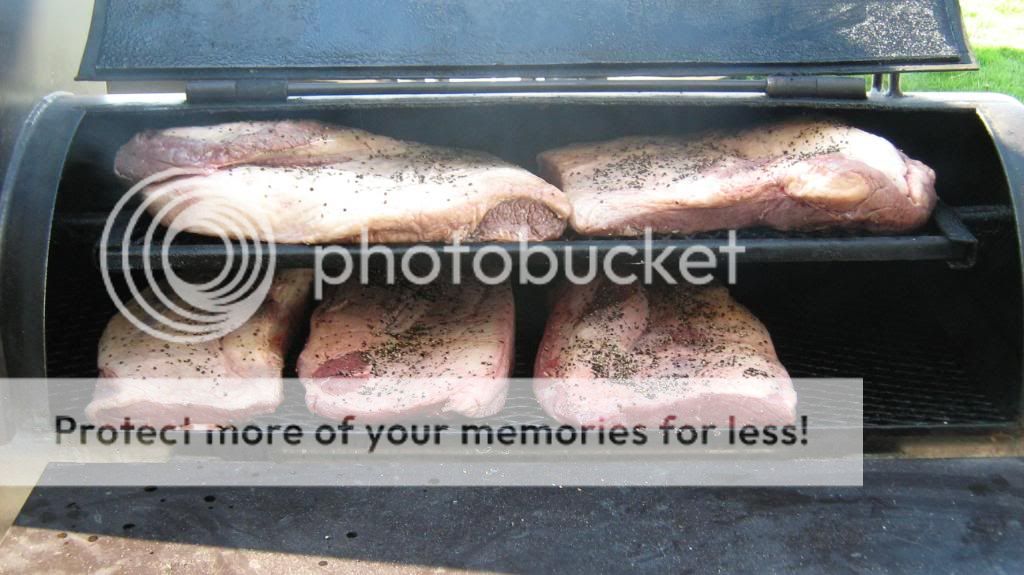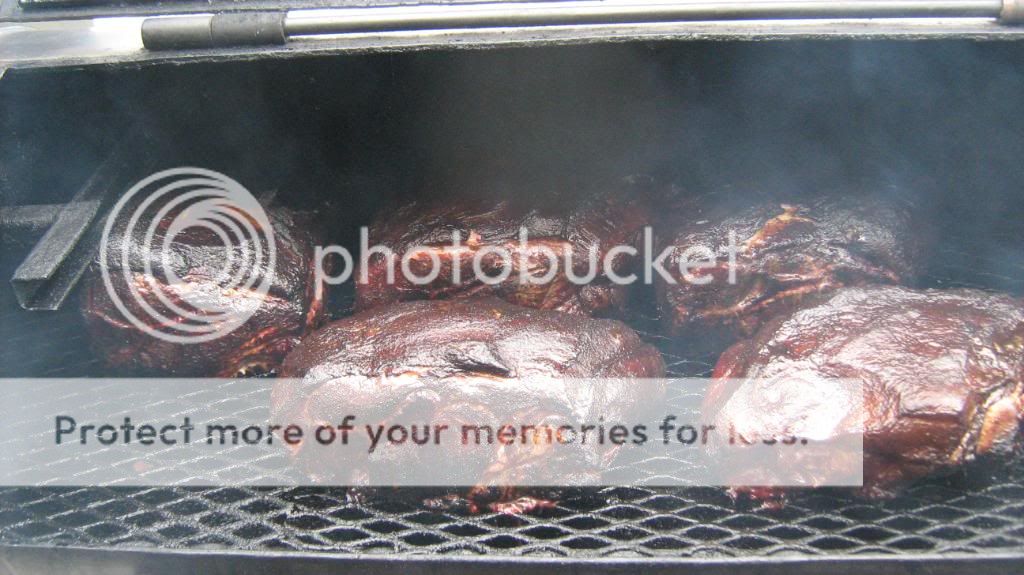I
infernooo
Guest
Zilla, from the man nathanm himself:
Meat is mostly water! There was a classic Star Trek epiosode where an alien species refers to humans as "ugly bags of mostly water" and that pretty much sums up what any animal is (well, the ugly part can be debated). So no matter whether you inject or brine or just use meat as-is, there is plenty of water in the meat to evaporate. In the case of brisket it is about 71% water.
The method of heating the meat does not matter, the same effect occurs for both radiative and convective heating.
Now, as it so happens, radiant heating plays essentially no role in most barbeque, because radiant heating is only important when there is a high temperature source. Most barbeque is smoked with an air temperature (dry bulb) of 90C/194F to 110C/230F. At those tempertaures radiant heating is insignificant. Most barbeque rigs / smokers have the fire baffled so the meat does not directly recieve IR radiation from it.
South American asado (from Chile or Argentina especially) does use radiant heat, but that is a very different method.
However, even if there was radiant heating, it wouldn't matter. The point about wet bulb temperature is that evaporating water takes energy, so a wet surface that is evaporating will be cooler than a dry surface. It doesn't matter how you heat it, if the surface is wet, then it will be cooler than a dry surface if water can evaporate.
When he says that wet bulb / dry bulb is about gas, I think there is some confusion. Wet bulb temperature is the temperature of a wet surface which is cooled by evaporation. It is a surface temperature. The air temperature is the dry bulb temperature. The reason that "gas" (i.e. air) is involved is that in order for the water to evaporate it must go into the air. If the air is already "full" of water (meaning that relative humidity is 100%) then evaporation can't occur.
Anybody who sweats knows this - sweating is done to take advantage of evaporative cooling. The reason that we feel more uncomfortable in high humidity is that our sweating doesn't work as well.
I am not sure that he understands that the temperature tests I did were not in a water bath. I took a vacuum sealed brisket and cooked it next to an uncovered brisket, but they were in the same oven. The sous vide bag simply stopped the evaporation.
There is a TINY effect due to collagen, but it is so tiny that it does not show up unless you use a differential scanning calorimeter. If there was a large collagen effect, then we would see it in the temperature profile for the sealed brisket with no evaporation. But we don't.
The test I did was in a convection oven, but a "free draft wood smoker" will not change anything. Water still evaporates! The existence of some smoke in the air won't stop water from evaporating. The smoke build up on the surface of the brisket may hinder evaporation slightly. The free draft part means that the smoker would, if anything, have a lower humidity than in the convection oven because the convection oven recirculates air to some degree while the smoker may, or may not depending on how open the dampers are.
The amout of draft in the smoker, the way air circulates, how full the smoker is, the dry bulb temperature in the smoker, the relative humidity of the air outside the smoker will all make small differences. That is why different people report a "stall" of different temperatures and durations.
The humidity outside the smoker has some effect, but only a small effect. The hotter air is, the more water it will hold. If you take air and heat it up to 90C/194F to 110C/230F, it will be very low relative humidity, no matter how moist the air outside is.
Finally, he can find no reference supporting what I am saying here because, as far as I know, nobody has explained the BBQ "stall" this way before. It is a new explanation. I suspect that some food scientist somewhere may well have figured this out, but I am not aware of any. But that doesn't mean it is wrong - it just means it is new.
The paper he quotes from Journal of Food Science supports ALL of what I am saying, by the way. It is a good early article on the topic of roasting meat. It confirms that there is substantial evaporative losses, and it confirms that the meat cooks with the surface at the wet bulb temperature.


